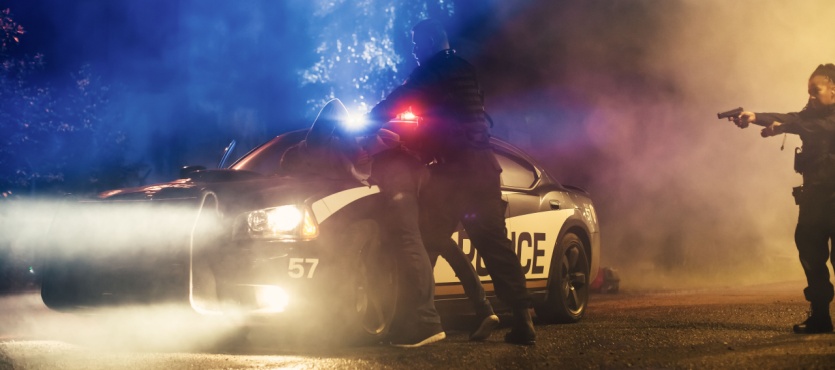The police are supposed to protect their citizens, but sometimes they do more harm than good. Many engage in excessive and unreasonable force with citizens who are believed to be committing crimes but are actually not. This has happened many times in Florida, and the situation continues to exist today.
Recently, in early September 2024. A traffic stop involving Miami Dolphins player Tyreek Hill escalated as police officers from the Miami-Dade Police Department forcibly removed Hill from his car in Miami Gardens. The officers violently threw him onto the roadway pavement and arrested him. The arrest occurred shortly before kickoff for a Dolphins home game, so he was released at the scene to continue on his way to participate. The police department released police body camera video footage the following day after public outcry.
The incident occurred just weeks after the City of Miami announced it was disbanding its Civilian Investigative Panel (CIP). CIP served as an independent police review board and was formed more than 20 years ago.
The legislative director at the ACLU of Florida released a statement calling the footage “deeply disturbing.” It is an example of why so many people fear and distrust law enforcement. Police officers should be making communities safer. They should not be forcibly arresting civilians for traffic citations or handcuffing peaceful bystanders.
Another situation happened back in 2013. On Thanksgiving morning, a 61-year-old man was involved in a traffic stop that led to a slow-speed police pursuit. He stopped his vehicle at Southernmost Beach and walked a few steps when police arrived and yelled at him to “get on the ground” and “do it now.”
Two police officers pointed weapons at the man and screamed at him. A third officer arrived and pointed an AR-15 rifle at the man’s head. The man complied with the officers’ orders and surrendered.
Moments later, there were a total of seven police officers at the scene. The man was handcuffed and asked to put his face in the sand. He was hit and Tased. The man, who had a bad heart, struggled to breathe. He was rendered unconscious, and he died as seven police officers watched.
The police officers denied any wrongdoing. However, the attorneys at Brill & Rinaldi were able to prove that they lied and violated the man’s civil rights. The City of Key West settled the case for $900,000 in mediation.
Miami street artists Humberto Pellegrino and Pedro Claveria were painting graffiti on train cars at 2 a.m. one morning in Pompano Beach when Broward Sheriff’s Office deputies moved in.
Both men said that they were surrounded by deputies, who wrongly suspected theft, and the artists peacefully surrendered.
Another case of police brutality happened in 2015. Two Miami street artists were painting graffiti on train cars at 2 a.m. one morning in Pompano Beach when Broward Sheriff’s Office deputies arrived and accused the man of theft.
The artists peacefully surrendered, but that’s not the end of the story. One deputy got his K-9 to attack the man as they lay face down on the gravel. The officers told the dog, “Eat boy, eat boy.”
A deputy lifted one of the men’s legs to prompt the dog to continue mangling him. The attack left gruesome wounds behind. The man screamed in agony. The case settled for $175,000, plus hefty legal fees. Brill & Rinaldi was the firm involved in that case as well.
The men were charged with burglary and criminal mischief. These were felony charges later dropped by prosecutors. The men wound up pleading guilty to trespassing.
Preventing Excessive Force
Preventing excessive force by police officers requires a combination of key strategies:
- De-escalation techniques. Training officers to resolve conflicts without force should be a priority. Teaching officers how to handle tense situations with calm communication, negotiation, and non-violent methods can reduce the likelihood of force escalation.
- Implicit bias training. Officers should receive training to recognize and counteract unconscious biases, particularly those related to race, gender, or socioeconomic status, which can influence the use of force.
- Crisis intervention training. Officers should be trained in dealing with individuals in mental health crises. This training focuses on minimizing harm and finding non-violent resolutions for these situations.
- Mandatory body cameras. Equipping officers with body-worn cameras ensures there is a record of interactions with the public. Footage can provide evidence in cases where excessive force is alleged, holding officers accountable.
- Monitoring and transparency. Policies should ensure that body camera footage is regularly reviewed and made available to the public, particularly in cases of use-of-force incidents.
- Community policing. Community policing emphasizes partnerships between the police and the communities they serve. Officers should be encouraged to form relationships with local residents, fostering trust and cooperation.
Contact Us Today
Law enforcement officials often take advantage of their power and use excessive force. Some even use all-out brutality, causing injuries or death to people who may not have even committed a crime.
If you have been the victim of excessive force by a police officer, contact the team at Brill & Rinaldi, The Law Firm. No matter if you have committed a crime or not, police should not use unreasonable force on you. Contact us today to learn your next steps. To schedule a consultation, call (954) 876-4344 or fill out the online form. We have offices in Weston, Coral Gables, and Daytona Beach.

